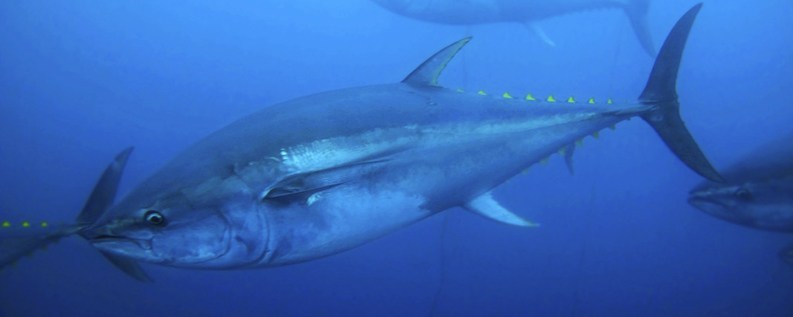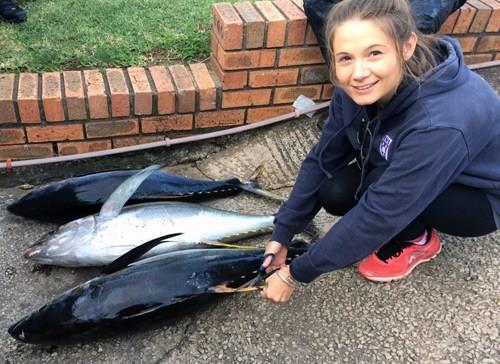The genetic mystery of yellowfin tuna
The tuna that swim where Atlantic and Indian Oceans meet off the coast of South Africa at Cape Agulhas remain a genetic mystery. Until now, any yellowfin tuna caught west of this point have been considered part of the Atlantic Ocean tuna population. Those caught to the east are seen as part of the Indian Ocean population.This view of tuna populations affects the way the region’s fishing is managed. However, researchers are starting to suspect these tuna are the same – that yellowfin found in Atlantic waters off South Africa are actually migrants from the Indian Ocean.

How genetics helps sustainability
As yet there is no clear genetic evidence to show which population tuna caught in this area belong to. But knowing whether or not come from genetically isolated populations is vital to sustainable management, as different populations may have different sustainable fishing levels.
As part of her Master’s degree at South Africa’s Rhodes University, Rachel is trying to get to the bottom of the problem. MSC funding allowed her to travel to Aberystwyth University in the UK to work in an internationally renowned laboratory for fisheries genetics. There she has been able to analyse yellowfin samples using genetic data obtained through the latest DNA sequencing technology.
This technology generates massive amounts of DNA sequence data, which allows molecular markers to be easily discovered in DNA. These markers are like signposts that can tell you if individuals are evolutionarily isolated from each other, or if they are from the same population. Having such detailed genetic information is useful for species that accumulate genetic differences slowly, like yellowfin tuna.

“Using next-generation sequencing, more than 10,000 single nucleotide polymorphism (SNP) markers were identified, and I expect that before too long, we may finally have detailed evidence on, and a better understanding of the population structure of this important species, so that it can be managed as sustainably as possible” says Rachel.
Within the next few months, the results of this research will be finalised and may reveal a need for a shifted boundary between the Atlantic and Indian Ocean management stocks of yellowfin tuna. Stay tuned for an update from Rachel…
